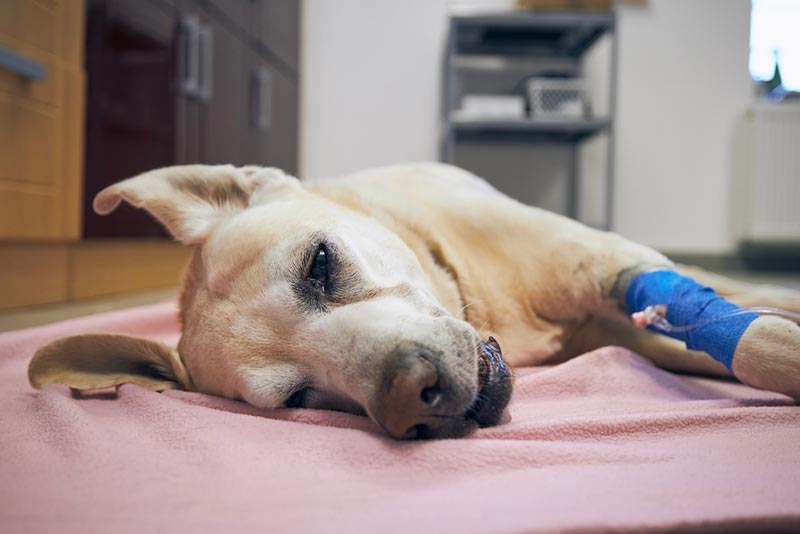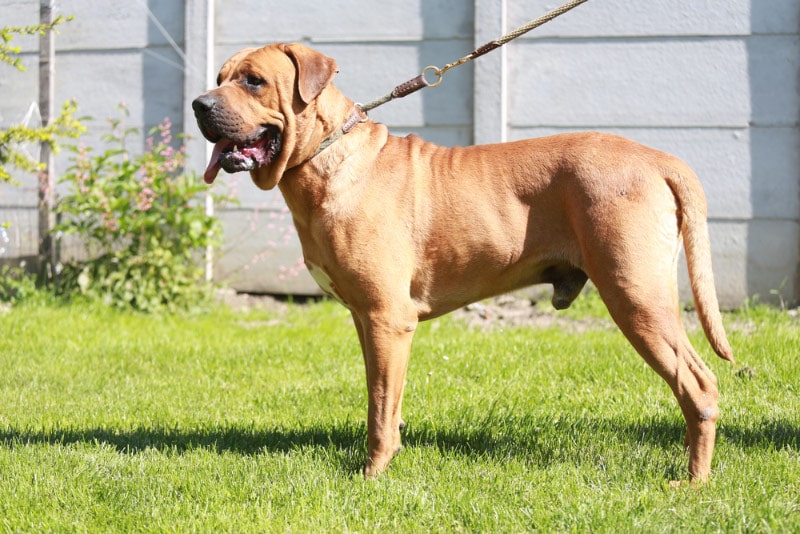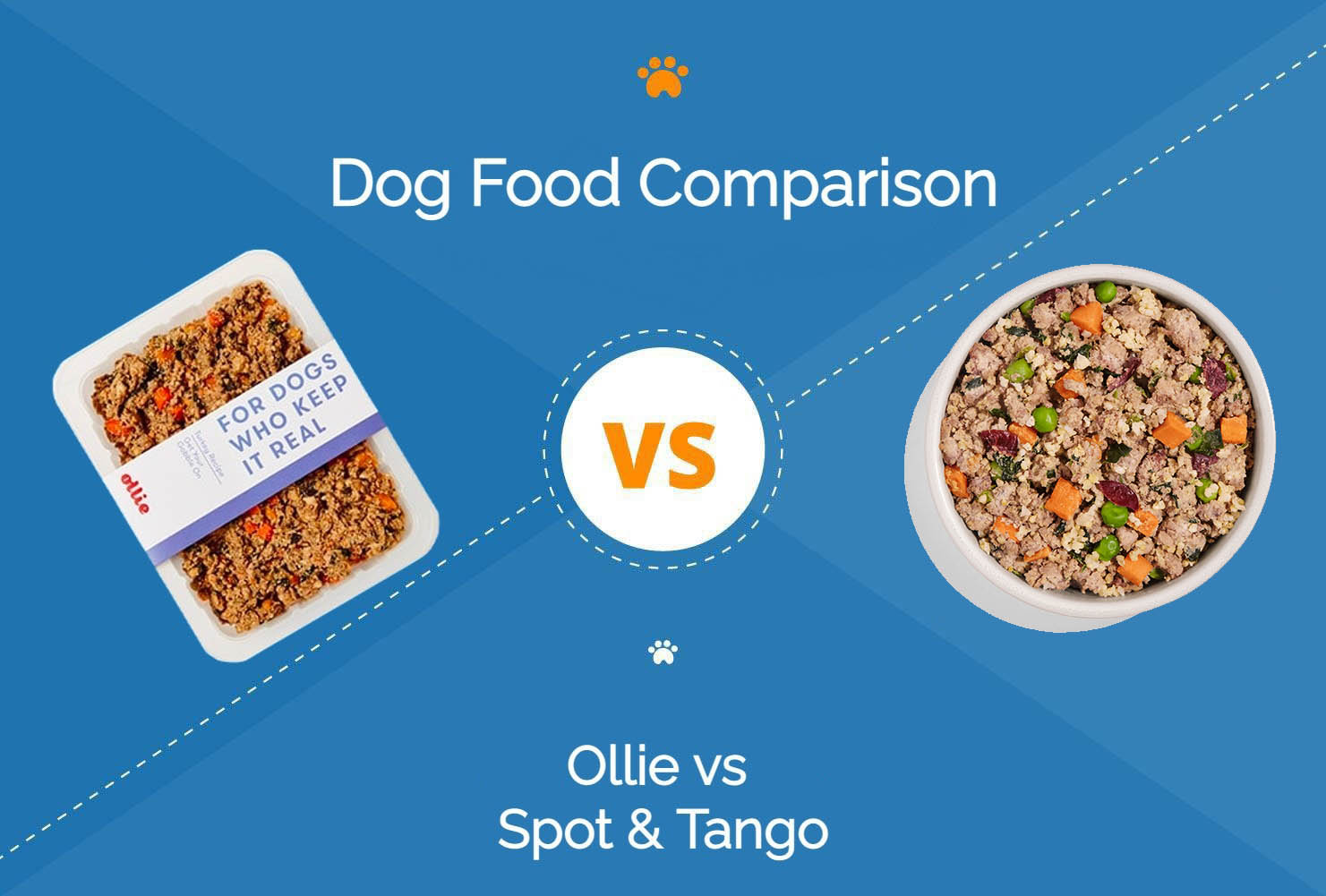Do Dachshunds Shed? Vet-Approved Facts & Grooming Tips

Updated on
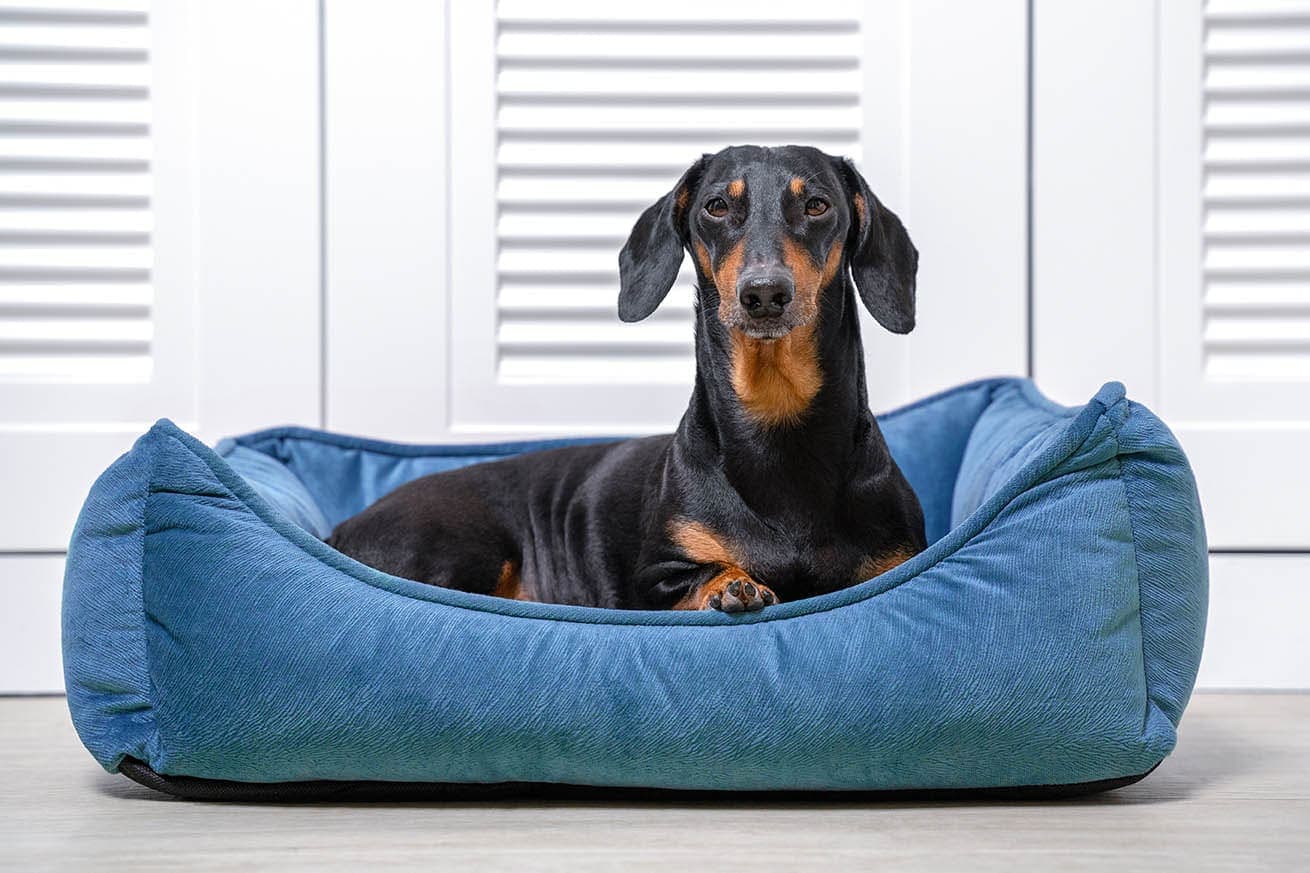
Click to Skip Ahead
Dachshunds, also known as “sausage dogs,” are a popular breed of small dogs. Many people choose Dachshunds as pets because they are loyal, playful, and do not require a lot of grooming. One question that potential Dachshund owners often ask is: Do dachshunds shed? The answer is yes—Dachshunds do shed. However, as moderate shedders, they do not shed as much as some other breeds of dogs.
There are various motivations for wanting a low-shedding dog. Many people believe that dogs that are lower shedding are a better choice for allergy sufferers who want to own pets. We’ll look at that theory later. Dachshunds are on the list of low-shedding dogs¹ that has been compiled by Purina. Therefore, if you’re looking for a dog breed that won’t make you have to vacuum so much, the Dachshund may be one of your best choices.
The 3 Types of Dachshund Coats
Whether you’re looking for a dog with a low-maintenance coat or one that will require regular grooming, when it comes to Dachshunds, there are three types of coats to choose from: smooth, wiry, and long. Each type of coat has its own set of benefits and drawbacks, so it’s important to choose the right one for your lifestyle.
1. Smooth
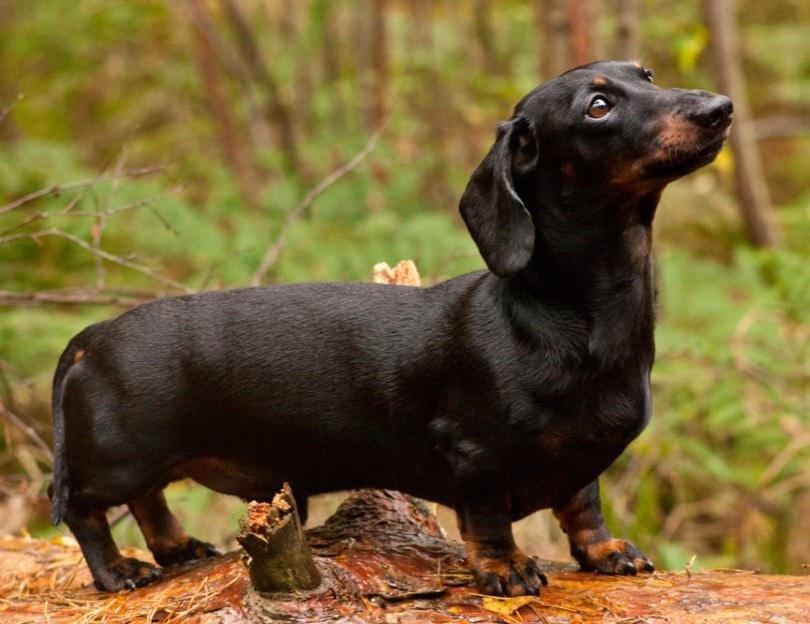
If you’re looking for a pet with a lower-maintenance coat, a smooth-coated Dachshund is the way to go. These dogs don’t require much grooming beyond the occasional brushing, and they’re relatively easy to care for. However, smooth-coated Dachshunds might not be as tolerant of cold weather as their wire-haired or long-haired counterparts.
2. Wiry
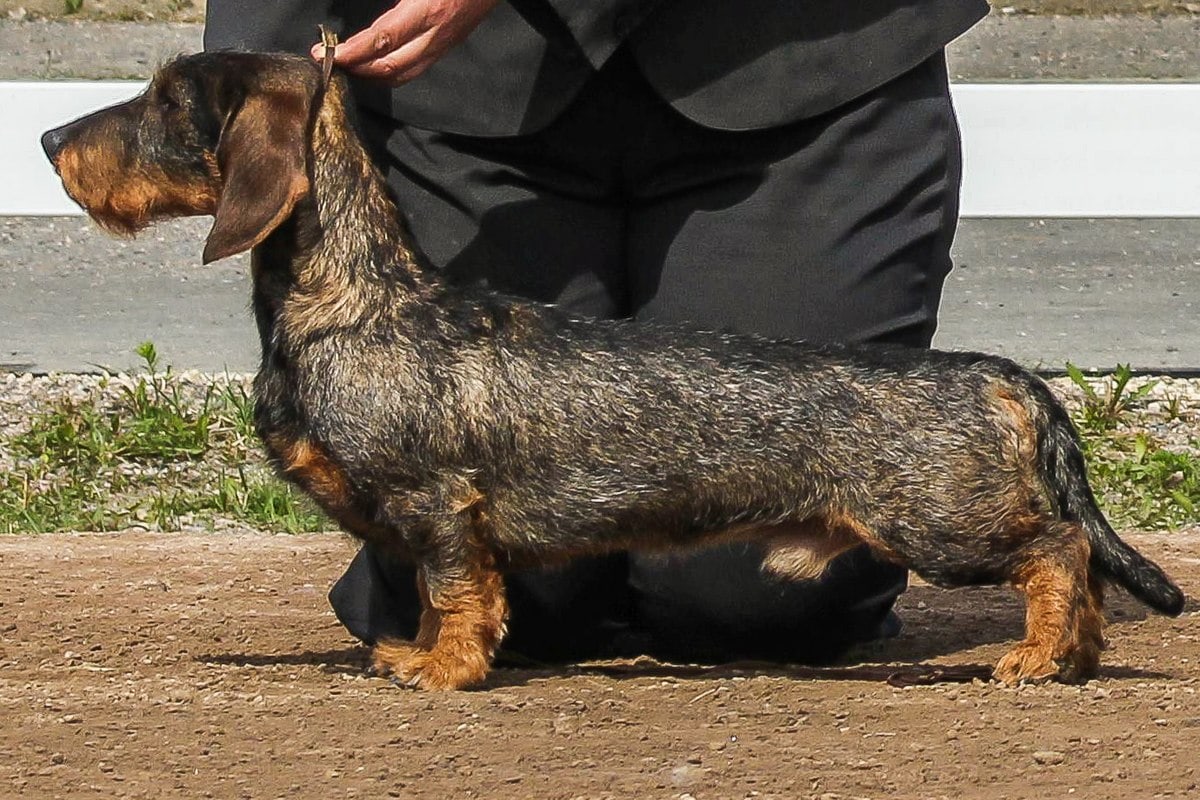
Wire-haired Dachshunds are known for being strong and resistant, making them a good choice for active families. The wiry coat is medium length and may require some time investment to keep it neat and tidy. They do require more grooming than smooth coats, but this is easily manageable with regular brushing. They also benefit from hand-stripping, which involves the removal of any excessive fur to prevent matting and reduce shedding.
3. Long
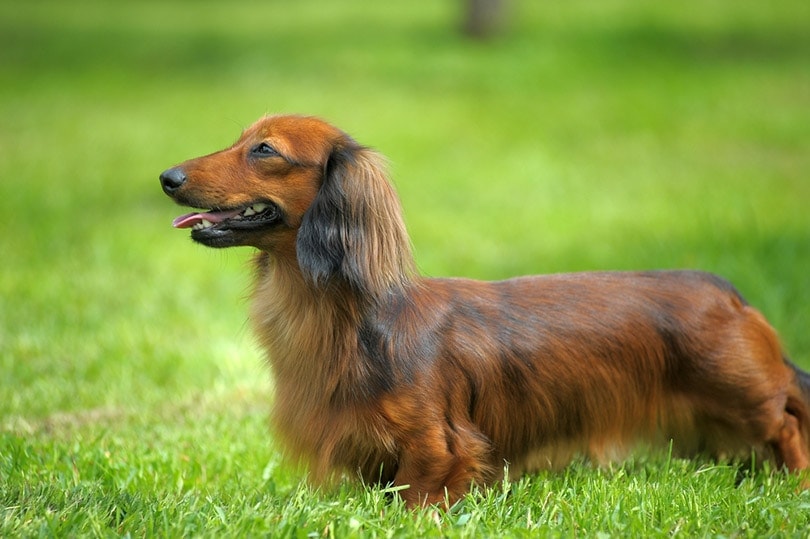
Long coats are the most high-maintenance of the three types of Dachshund coats. The long coat is the most demanding option but also the most spectacular to look at. The long-haired Dachshund is possibly the most difficult to maintain of the three types, requiring regular brushing and bathing to prevent mats and tangles. They also tend to shed more than their smooth- and wiry-coated counterparts.
Shedding: All Dachshunds Shed, Regardless of Coat Type
Despite what many people think, all Dachshunds shed—regardless of coat type. Whether they have a smooth coat, wiry coat, or long coat, Dachshunds will shed throughout the year. In fact, they are rated as moderate shedders by the American Kennel Club. While the amount of shedding may vary depending on the dog’s individual coat type, all Dachshunds will lose some fur because it is a natural process.
This can be a problem for many Dachshund owners, as shed fur can quickly become embedded in carpets and furniture. Regular grooming can help to minimize shedding, but it’s important to accept that some shedding is simply inevitable. The best way to deal with stray Dachshund hair is to have regular vacuuming sessions and to keep plenty of lint rollers on hand!
Seasonal Shedding
While it is true that all dogs shed, some breeds shed more than others. As we have seen, Dachshunds are not heavy shedders. However, many factors can affect your Dachshund’s shedding, such as your dog’s age, health, coat type, and the time of the year. Seasonal shedding is also common in Dachshunds. During the spring and fall, when days are getting longer or shorter, many canines will shed more profusely than usual. This is because the hair follicle cycle depends on environmental temperature and photoperiod.
Dachshund shedding is a normal process for any haired dog that helps to keep their coat healthy and looking its best. The amount of shedding will vary from dog to dog, but all Dachshunds will shed at least some hair throughout the year. Some owners may find that their dog sheds more during certain seasons or times of stress, but this is typically not a cause for concern.
Brushing & Grooming
When it comes to dealing with shedding in your Dachshund, regular brushing and grooming are essential. This will help to remove any loose hair, which can then be disposed of properly. In addition, it will also help to keep your Dachshund’s coat healthy and free of tangles or mats. Brushing and grooming time also provides an opportunity to bond with your dog and inspect your Dachshund’s skin for any signs of parasites, irritation, or infection.
Shedding is a natural process for dogs, and, unfortunately, there is no way to completely stop a Dachshund from shedding. The best way to deal with shedding is to comb and clean your dog regularly.
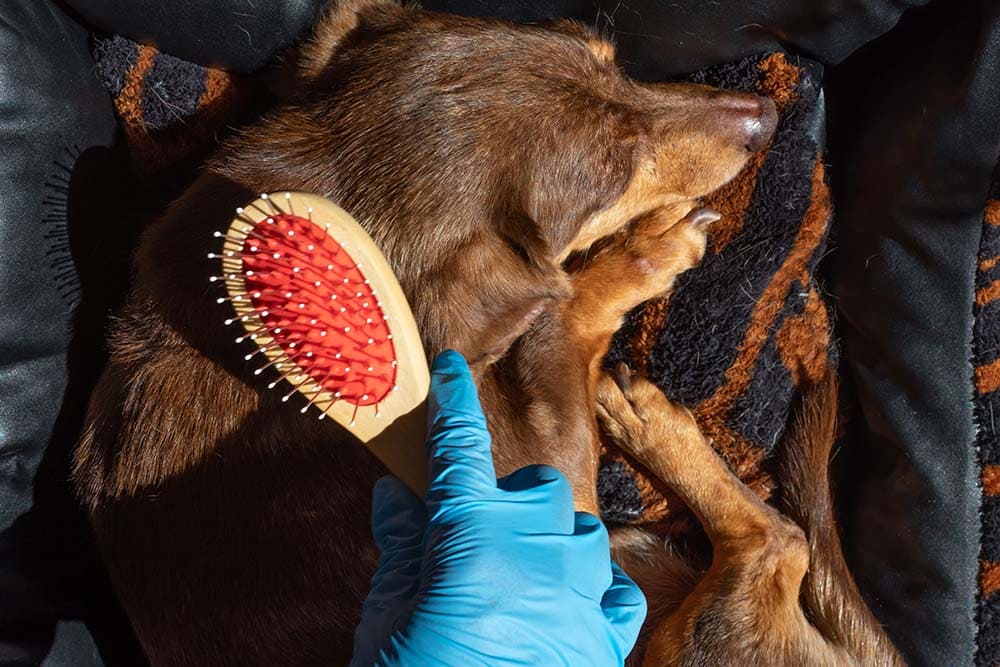
Which Dog Breeds Are Lower Shedding?
There are many factors to consider when choosing a dog, such as size, temperament, energy level, and shedding. Some people are particularly concerned about shedding, as they don’t want their home to be covered in dog hair. Several dog breeds are known for being low shedders, which means they don’t lose excessive amounts of hair.
If you’re looking for a lower-shedding breed, there are many options to consider. Breeds that are considered low shedders include the Affenpinscher, American Eskimo Dog, Australian Terrier, Basset Hound, and Beagle—just to list a few. These breeds often—but not always—have short coats that don’t require a lot of grooming. If you’re looking for a low-shedding breed, do your research to find one that fits your lifestyle and personality. Once you’ve found the perfect pup, you’ll have a furry, easy-care friend for life.
The Advantages of Lower Shedding Dogs
Many people think that lower-shedding dogs are hypoallergenic, but this is false. While they may shed less hair, lower shedding dogs are still capable of causing an allergic reaction in people. It is impossible to find a dog that is truly hypoallergenic because all dogs produce allergens, which are proteins that are produced naturally in their body. These proteins trigger allergies to a greater or lesser extent. The best way to determine if you are allergic to a particular dog is to spend time around the animal and see if you have a reaction.
Summing Up
In conclusion, if you are looking for a dog that doesn’t shed, a Dachshund is not the breed for you. The smooth type is low-maintenance when it comes to grooming, but their shedding is constant, although the amount varies by individual dog. Seasonal shedding is common, so you may find yourself dealing with a little extra hair in the spring and fall. Fortunately, regular brushing can help to minimize the shedding and keep your Dachshund’s coat healthy and looking great.
If you can deal with some extra hair around the house, then a Dachshund might be the perfect dog for you. As long as you are prepared for a small dog with a big personality, a Dachshund might be an excellent choice for your family.
Featured Image Credit: Masarik, Shutterstock




